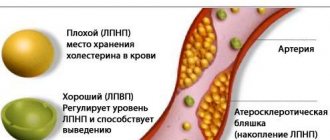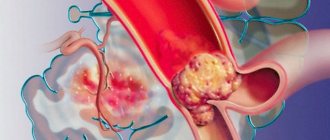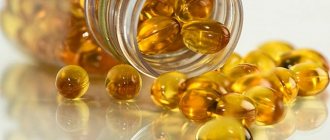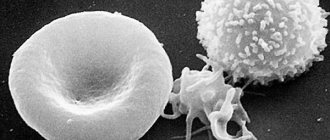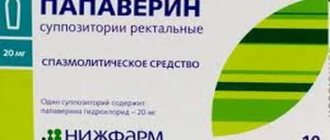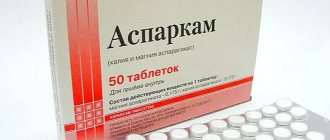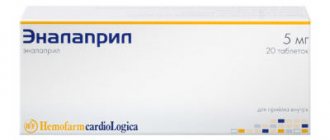With high cholesterol, nutritional management is of great importance. It is important to include healthy and cholesterol-lowering foods in your diet, and exclude harmful ones that contain a lot of animal fats. Meat is one of the most commonly consumed foods by humans, but some varieties of it can have a negative effect on already high cholesterol. From the article we will find out which meat has the least cholesterol: we will consider different types of product.
How cholesterol levels affect human health
Before we compare the cholesterol content in meat, let's try to understand how this fat-like substance affects the body and why it causes health problems. So, cholesterol (chemical name - cholesterol) is a fat-like substance belonging to the class of lipophilic alcohols. Only a small part of it enters the body with animals as part of food: up to 80% of all cholesterol is produced by liver cells. The organic compound is extremely important for the body and performs the following functions:
- It is part of the cell wall, regulating its permeability and elasticity. In medical sources, cholesterol is called a stabilizer of cytoplasmic membranes.
- Participates in the synthesis of biologically active substances by liver and adrenal cells: mineralocorticoids; glucocorticosteroids; sex hormones; vitamin D; bile acids.
In normal quantities (3.3-5.2 mmol/l), this substance is not only not dangerous, but also necessary. Disorders of fat metabolism begin with elevated cholesterol, the level of which in the blood is affected not only by chronic diseases, but also by the nature of nutrition and lifestyle.
An excess of “bad” fats in the body contributes to the formation of cholesterol plaques on the inner walls of the arteries and the development of atherosclerosis, which, in turn, is dangerous for the development of serious complications: myocardial infarction and stroke.
According to numerous studies by the American Heart Association, it is recommended to consume less than 300 mg of cholesterol per day to prevent atherosclerosis and reduce the risk of cardiovascular complications. Which meat has more cholesterol and which has less? Is this product useful or harmful for atherosclerosis? And what types are recommended for atherosclerosis: let's figure it out.
Fats and lipoproteins
Cholesterol (the word cholesterol is used abroad) is a natural type of fatty alcohol that has a waxy consistency. It is found in all cells of the human body, approximately 80% is produced directly by the body, the rest comes from food. There is a very widespread opinion that this substance is completely harmful to the body. This is far from true. Cholesterol is essential for life; it ensures the stability of cell membranes, protects red blood cells from toxins, and promotes the production of vitamin D and many important hormones.
In the blood it is contained in the form of complex compounds called lipoproteins, which are divided into groups:
- high density lipoproteins (fats) (HDL);
- low density lipoproteins (LDL);
- very low density lipoproteins (VLDL);
- chylomicron.
Beneficial features
When the conversation turns to the benefits of meat, people are divided into two opposing camps. Most people love to eat delicious food and cannot imagine their life without a flavorful steak or juicy cutlets. In addition to the undeniable advantage of excellent taste, the product has the following beneficial properties:
- Meat is the leader in protein content. It contains a complete list of amino acids, including essential ones, which cannot be synthesized in the human body. Polypeptide chains, consisting of many amino acid residues, are the building material for cells of all organs and systems. It is especially important to have sufficient protein intake with food in childhood, during pregnancy and lactation, as well as during the rehabilitation period after severe somatic pathology.
- High levels of microelements are determined in various types of meat:
- iron, responsible for binding oxygen molecules to red blood cells;
- calcium, responsible for bone growth and strengthening;
- potassium, together with sodium, carrying out metabolic processes between cells;
- zinc, which regulates the functioning of the immune system;
- magnesium and manganese, which are catalysts for most chemical reactions in the body.
- Vitamin A controls the functioning of the body’s nervous system and promotes sharp vision;
- vitamin D regulates the functioning of immune cells;
- B vitamins, in particular B12, affect the functioning of the brain and spinal cord, as well as the hematopoietic organs.
It has been noted that the complete exclusion of meat from the diet and long-term vegetarian nutrition can lead to the development of iron deficiency and vitamin B12 deficiency anemia.
Diagnosis of pathologies
In order to periodically observe a picture reflecting how much cholesterol is in the blood, you need to regularly consult a specialist and periodically take blood tests. If the maximum permissible norm is exceeded, you should limit yourself to most foods containing large amounts of fat and include foods containing low amounts of cholesterol in your diet.
It also happens the other way around: the amount of cholesterol in the blood does not exceed the standard value and is far behind it; in this state of affairs, the level of the substance must be increased to ensure normal body function. But nevertheless, this should be done gradually, with extreme caution, so that the indicator is not exceeded again.
In any case, it is much easier to just monitor your health and eat right.
Harm from meat products
But there are also ardent opponents of eating meat in any form. They call it alien to the human gastrointestinal tract, and in addition to the moral aspect of eating living beings, they note the biological “difficulties” of digesting this product.
Indeed, meat contains little fiber. These important dietary fibers regulate the functioning of the gastrointestinal tract and stimulate the movement of the food bolus through the intestines. Due to their lack, meat is difficult to digest, and the body spends a lot of energy on this process. Hence the heaviness in the stomach familiar to many, which occurs after a hearty feast and excessive consumption of meat food.
Another feature of the chemical composition of meat is the high content of refractory fats and cholesterol. How many “bad” lipids are contained in a product depends not only on its type, but also on the conditions of keeping and feeding the livestock. The harmful properties of meat are also significantly enhanced by modern processing methods - the use of hormones to enhance the growth of livestock and poultry, the addition of pesticides and nitrates to feed, and the use of dyes to give meat a “beautiful” color.
Meat composition
The most beneficial substances for the human body contain meat muscles and its fibers. As for the fat layer, it contains more harmful cholesterol than useful components. Therefore, when buying meat, you will have to look at how fatty it is and choose leaner cuts. The composition of chemicals in meat is approximately the following:
Eating five fruits and vegetables a day is more recommended than ever for patients with too high a limit. For this reason they are recommended, they are also recommended for good digestion and the prevention of problems such as intestinal diverticula. These are mainly carotenoids, polyphenols and flavonoids. . The diet that people with cholesterol undergo is sometimes part of a fighter's journey and is often a frustrating experience. It is important not to eliminate certain foods, but to limit your overall intake of saturated fat, regardless of its source.
- water - 57-73%;
- proteins - 15-22%;
- saturated fats - up to 48%.
In addition to the listed main components, meat also contains minerals, vitamins, enzymes, and if the animal or bird was raised “under chemicals,” then it may also contain hormones.
Keep in mind that saturated fats contain high cholesterol levels. It is this type that enters the human body in large quantities and is deposited on the walls of its vessels, sometimes forming congestions that are difficult for the blood flow to pass. Cholesterol contained in fatty cheeses is also, by the way, no less harmful. What cheese to eat for this problem can be found in a separate article
Over the course of four weeks, volunteers took part in clinical trials with several diets, including varying daily amounts of beef. The results of this study show that daily consumption of lean beef does not increase cholesterol levels in volunteers who otherwise eat a diet low in saturated fat.
According to the results of this study, people with hypercholesterolemia can consume meat regularly, even daily, as long as they choose cuts, use healthy cooking methods, and minimize other sources of saturated fat.
In addition to vascular damage, fatty meat products also lead to disruption of metabolic processes, the appearance of excess weight, and various cardiovascular pathologies. Therefore, think carefully about whether to eat fatty meat for this problem.
Table comparing cholesterol content in different types of meat
If we compare all types of meat in terms of cholesterol content, we get the following picture:
| Product | CS content, mg/100 g |
| Chicken (breast) | 35 |
| Turkey | 40 |
| horsemeat | 68 |
| Beef | 80 |
| Pork | 80 |
| Chicken (legs, wings) | 89 |
| Mutton | 97 |
| Rabbit | 123 |
Thus, chicken breast became the meat with the lowest cholesterol content.
Do not forget that when taking into account the “usefulness” of a product in terms of preventing the development of atherosclerosis, not only the level of total cholesterol is taken into account, but also the content of saturated fatty acids and refractory fats in meat. This is why rabbit meat is considered healthier than pork or beef.
Despite the ongoing debate in scientific circles, doctors note that moderate consumption of meat will only benefit a person. In this case, it is better to choose dietary products - chicken, turkey, rabbit or lean lamb. The method of preparing the meat dish also plays an important role. But in general, meat has a beneficial effect on the body and does not cause a sharp increase in blood cholesterol levels.
Lamb, goat and horse meat
Lamb contains approximately 17 mg of protein per 100 g. The amount of fat in it is less than in beef. It is important that lamb contains the substance lecithin, which helps normalize cholesterol metabolism.
Lamb fat consists of more than 50% healthy monounsaturated fats and polyunsaturated acids omega 3 and 6. Lamb meat is recommended for people with anemia, as it contains a lot of iron. But if you are prone to allergies, it is better to avoid eating lamb. 100 g of this meat contains 73 mg of cholesterol.
Horse meat is used as food by some peoples of Central Asia, Yakutia and Mongolia. As a rule, meat from foals under the age of 1 year is consumed, when they have already managed to build muscle mass, but there are still few different hormones that affect taste. The amount of cholesterol in horse meat is minimal among the types of meat under consideration and is about 60 mg per 100 g of tenderloin.
Goat meat does not have a very pleasant smell, but most of its consumers have proven methods for getting rid of this peculiar aroma and taste. But in terms of cholesterol levels, goat meat is comparable to foal meat - less than 60 mg per 100 g of product.
Poultry meat is considered a dietary product (but not the skin, it contains a lot of saturated fat). Turkey and chicken have the lowest cholesterol levels: approximately 40 mg per 100 g.
Beef has more cholesterol. Horse meat and goat meat contain the least amount of this substance. If we add poultry meat to the rating, it will confidently take 1st place.
Turkey
Turkey is increasingly appearing on the diet table.
Benefit
Turkey contains high-quality protein, vitamins, normal levels of fat, micro- and macroelements, and essential amino acids. It has a large amount of useful substances and is low in calories.
Turkey contains as much phosphorus as fish products. Turkey is easier for the body to digest. Its dietary properties allow people with high cholesterol to use poultry in their diet.
Nutritionists recommend giving turkey to children, pregnant and lactating women, and people suffering from anemia. In turkey, the cholesterol level is only 40 mg per 100 grams of product. There is much more in pork and lamb.
Flaws
Turkey is an almost ideal product that can be consumed by everyone. The only drawback is her skin, under which there is a thick layer of fat. The quality and freshness of the bird is important.
Below is a table that contains information about popular varieties of meat.
Nutritional value and cholesterol content of different types of meat.
| Type of meat | Proteins, g | Fats, g | Cholesterol, mg | Calorie content, kcal |
| Beef | 18,5 | 16,0 | 80 | 218 |
| Mutton | 17,0 | 16,3 | 73 | 203 |
| Pork | 19,0 | 27,0 | 70 | 316 |
| Chicken | 21,1 | 8,2 | 40 | 162 |
| Turkey | 21,7 | 5,0 | 40 | 194 |
There is a lot of debate about the benefits and harms of meat. Some people believe that it is one of the most essential foods in the diet. But there are people who believe that the human body is not able to digest meat sufficiently. Many of them doubt that it is useful.
The benefit of meat lies in its composition. Such products contain a lot of protein, amino acids, vitamins, micro- and macroelements. Anti-meat people believe that heart disease is only caused by eating meat.
But among the adherents of the anti-meat lifestyle there are quite a few people with vascular atherosclerosis. Moderate consumption of meat products does not lead to an increase in blood cholesterol levels.
For example, lamb contains an important element - lecithin. It regulates cholesterol. Consumption of chicken and turkey saturates the body with beneficial vitamins and minerals. Complete meat proteins improve the functioning of the nervous system and help stimulate metabolism.
Which foods contain less cholesterol?
Almost every food contains cholesterol. There are practically no products that do not contain it at all, but there are a large number of different products that contain a minimal amount of low-density lipoprotein. Not everyone understands that cholesterol is not always fat. Fatty meats contain a lot of fat, so you won’t be able to tell by looking which foods you can eat and which you can’t. Also, when diagnosing lipoprotein levels above normal, you should not immediately run to the pharmacy for medications. Proper nutrition and a few simple health rules will help you quickly and effectively remove excess low-density lipoproteins.
Many people in the fight to reduce cholesterol forget that the diet must be balanced. Conventionally, all products can be divided into three product categories:
- Foods that have a lot of cholesterol. These foods not only have a high cholesterol content, but also increase its level in the blood.
- Foods low in lipoproteins. These products do not affect the level of lipoproteins in the blood.
- Food with minimal lipoprotein content. Such food not only contains a minimum of cholesterol, it also helps eliminate it from the body.
List of foods high in cholesterol
If you have high cholesterol, foods with high levels of lipoproteins should generally be limited. But not all fatty foods are bad for the body.
Harmful fat is found in meat, coconuts, cheese and other dairy products.
Basic rules of nutrition for high cholesterol:
- Prefer lean meat. If there is a layer of fat on the meat, cut it off and remove the skin from the chicken.
- Although you can eat meat, it is better to give preference to fish rather than meat.
- Eat fish at least 2 times a week.
- Eat vegetables high in polyphenols. This substance colors vegetables red, blue and purple.
- Eat porridge regularly.
- Use vegetable oils to season dishes.
- Eat nuts regularly.
- Eat only bread with bran.
- Dairy products can only be eaten with low fat content. You can eat low-fat cottage cheese, sour cream, kefir. But milk is high in cholesterol and fat, so it is better to limit its consumption.
- You cannot eat large quantities of eggs. You can eat 2 yolks per week and no more than 6 whites.
- Fast food products, sausage, fast food and sweets should be excluded from the diet.
- Do not eat offal (liver, kidneys, brain). Animal liver also contains lipoproteins, so liver should not be eaten.
- Do not consume any confectionery products (sweets, ice cream, cookies).
- Avoid mayonnaise and butter in favor of vegetable oils.
- Don't fry foods. When frying, fats turn into trans fats, which are even more dangerous than cholesterol, so steam or boil your food.
- Replace coffee with green tea. But you shouldn’t drink large amounts of green tea either. It contains even more caffeine than coffee.
- Limit your consumption of alcoholic beverages. Only small amounts of red wine are allowed.
Vegetables and fruits help lower cholesterol levels
Vegetables and fruits are very useful for getting rid of excess cholesterol. Citrus fruits are especially useful because they contain a lot of vitamin C, the enemy of bad lipoproteins. To reduce them, you also need to engage in physical activity and drink a lot of water. Sports and water speed up metabolism and help flush cholesterol out of the blood.
